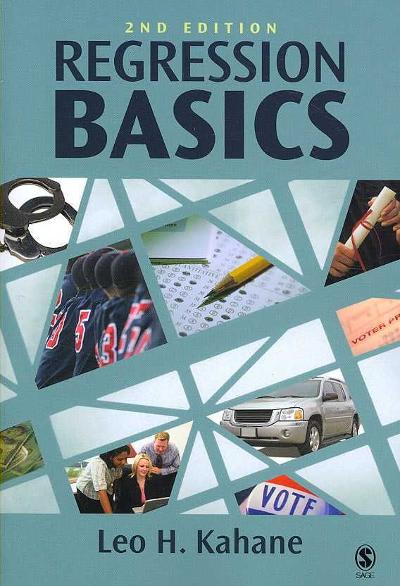Question
1. Can you develop a clear and specific research question that is relevant to the three research studies? 2. Can you develop a specific, testable
1. Can you develop a clear and specific research question that is relevant to the three research studies?
2. Can you develop a specific, testable hypothesis corresponding to your research question?
3. Can you describe aspects of sampling that you would want to consider while acquiring participants for your study?
4. Can you select a design (experimental or correlational) that aligns with the research question and hypothesis? Why did you select this design? Identify conceptual variables that align with the research question and hypothesis.
5. Can you select a measure to define a conceptual variable operationally? Please state whether it uses natural/laboratory observations, surveys, objective/physiological measures, interviews, etc. For the variable you measure, will you identify its scale of measurement?
6. Can you describe your type of analysis and the p-value to support your hypothesis?
7. Can you develop the plan's discussion content? What would you expect to be the main finding of your study How would you know if your hypothesis was supported The potential implications of the findings A possible limitation of the proposed study Suggestions for future research
REFERENCES:
This journal article, "When Is Happiness About How Much You Earn? The Effect of Hourly Payment on the MoneyHappiness Connection," explores the connections between self-reported health, happiness, marital happiness, frequency of sexual activity, and the number of companions of people that are non-monogamous (CNM) or open to being CNM. The journal article compares data from the 2012 multinational survey of 4062 respondents to the 2010-2014 US General Social Survey, researching dissimilarities in age, marital status, number of partners, sexual frequency, gender, education, and income (DeVove & Pfeffer, 2009). The study analyzed variables by gender, including 612 non-binary-gendered individuals, marital status, number of partners, sexual frequency, age, education, and income. Participants in the CNM example conveyed being healthy. Multiple-partnered showed they are happy in their marriages. Multiple-partnered females conveyed having more routine sexual activity with more individuals than individuals within the GSS. The research study delivers an understanding of the dissimilarities between the CNM and the general population (DeVove & Pfeffer, 2009). The study also delivers a unique outlook on the dissimilarities between non-monogamous individuals and those who are not non-monogamous and a starting point for forthcoming examination on CNM connections and benefits. (DeVove & Pfeffer, 2009)
The journal article "Money and happiness: does age make a difference?" by Chang-Ming Hsieh studies the connection between income and happiness among different age groups. The research study analyzed data from the United States General Social Surveys between 1972-2006. After controlling important socio-demographic variables, researchers (Hsieh, 2011) examined if income is positively associated with happiness for young, middle-aged, and elderly adults. The research study discovered that income is positively associated with happiness for young and middle-aged adults but not for elderly adults (Hsieh, 2011). After overseeing significant socio-demographic variables, there was no substantial relationship between income and happiness for elderly adults. The effect of household income on happiness was minor for elderly adults than young and middle-aged individuals (Hsieh, 2011). However, the relationship between household income and happiness did not change significantly across age groups after including social comparison variables. The relationship between income and happiness did not change significantly by age group after controlling variables. The research study indicates that the association between earnings and happiness differs based on age groups. Income has a more significant positive connection with happiness for younger and middle-aged adults than elderly adults (Hsieh, 2011).
In the journal article published in the Archives of Sexual Behavior in 2021, Researchers (Cox et al., 2021) from Italy studied the outcomes of relationship quality, gender, and sexual orientation on self-esteem in same-sex relationships. The authors (Cox et al., 2021) utilized a sampling of 835 same-sex partners for this analysis. The study's results indicated that there was no statistically substantial dissimilarity in self-esteem between genders and sexual orientations, there was. Individuals classified as bisexual or pansexual and same-sex mates who identified as homosexual held a more heightened self-esteem. The research study discovered that people of all genders and sexual orientations had greater self-esteem when their relationships incorporated heightened communication, faith, and pleasure. It also indicates that sexual orientation affects one's sense of self-worth. Homosexuals have better self-esteem than bisexuals or pansexuals (Cox et al., 2021). According to the analysis, it is vital for individuals in same-sex relationships to retain an adequate connection if they desire to retain increased levels of self-esteem (Cox et al., 2021). The authors state that additional investigation is needed to completely comprehend the dynamics of same-sex relationships and how they can impact self-esteem (Cox et al., 2021).
Step by Step Solution
There are 3 Steps involved in it
Step: 1

Get Instant Access to Expert-Tailored Solutions
See step-by-step solutions with expert insights and AI powered tools for academic success
Step: 2

Step: 3

Ace Your Homework with AI
Get the answers you need in no time with our AI-driven, step-by-step assistance
Get Started


